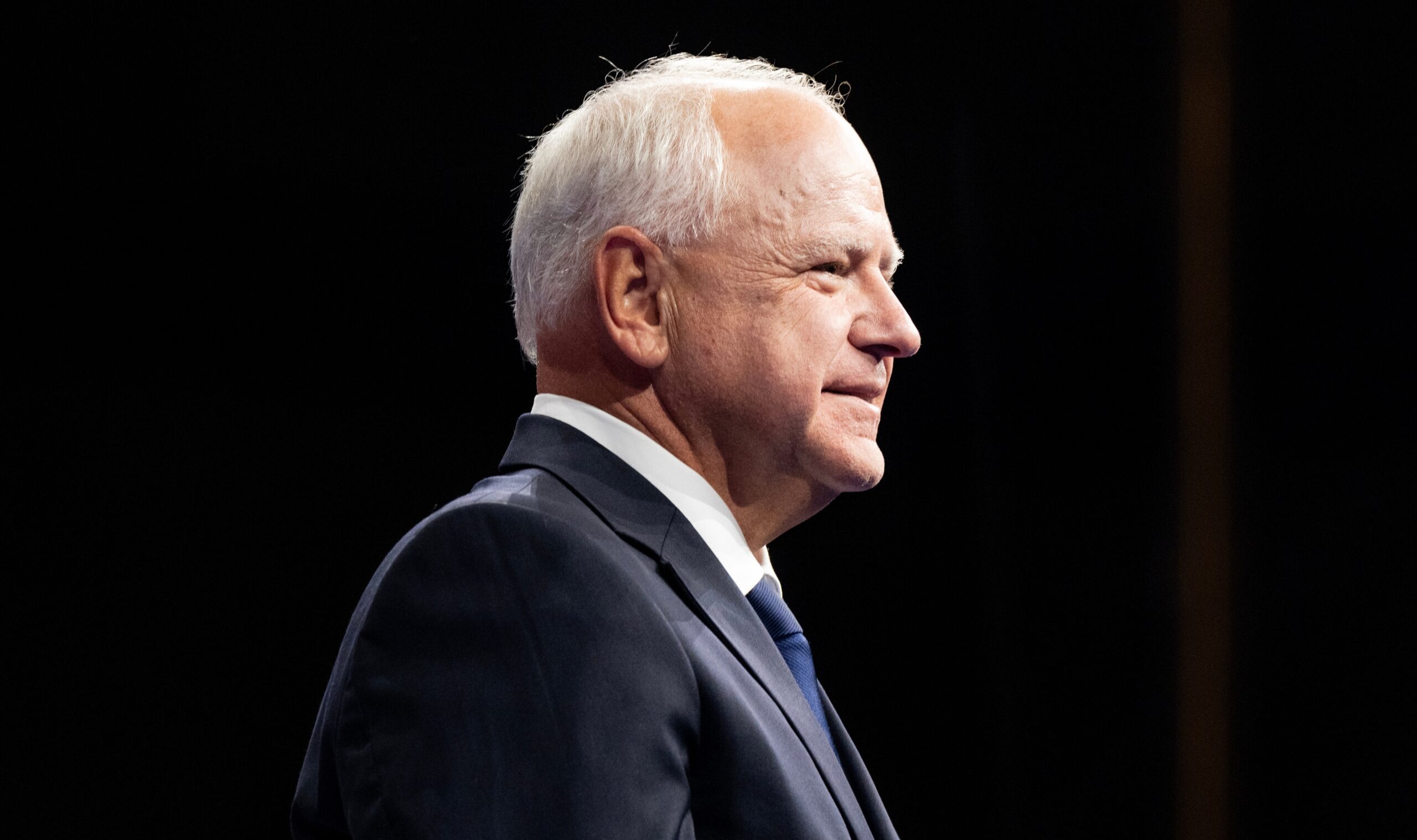Has Walz Betrayed the Upper Midwest?
The Minnesota governor is no heir of the family-oriented prairie populism of yore.

Tim Walz’s selection as Kamala Harris’s running mate is a reminder that many commentators just don’t get rural America—certainly not the heavily German and Scandinavian portions of the upper Midwest that Tim Walz hails from. In the eyes of many opinion writers, rural people are straightforwardly rightwing, favoring abortion bans and libertarian economics with equal fervency. They are said to be motivated by racial resentment, as if the gothic obsessions of the Old South have equal resonance across the interior of the whole country.
Look closer at the political history of this region, though, and you’ll see something different. Around the turn of the century, the upper Midwest gave birth to a culture that embraces social and economic progress while insisting on a fundamentally conservative understanding of family and community. This unique mix can be seen in the region’s simultaneous opposition to abortion and love of women’s sports, its history of support for small business and state-owned enterprises
Tim Walz comes out of this political culture, but has departed from it. Certain elements of his record—such as creating standards boards for nursing homes and banning non-compete clauses for employees—are in the best tradition of the region’s reforming history. Others—like his indifference to unborn life and support for child-sex change operations—are not.
Democrats are hoping that Walz will help with outreach to rural voters, but there is a distinct lack of enthusiasm for him in the part of Nebraska where he has his deepest roots. Boyd County, a narrow strip of land near the South Dakota border, is populated by families of German farmers: Vogts, Zeislers, Reimans, Schmitzes (yes), Blums. His mother comes from one of these clans and still resides in the county—not far from my own family’s farm.
This is the place where Walz’s parents were married and where he graduated from high school. But there is little excitement for the local boy made good. “I don’t think many people around here are going to vote for him,” one local said to me. “He’s real liberal. I don’t like him much,” texted another.
The idea that rural voters can be won over by a candidate who simply looks like them is refuted by recent history. Consistent with patterns across the rural Midwest, residents of Boyd County voted for Barack Obama at higher rates than they did for Joe Biden. What mattered wasn’t the candidate’s skin color, but his ability to relate to voters while offering an appealing set of policies.
Walz should be positioned to do this. Even as he moved from Nebraska to Minnesota, he remained in a region marked by important commonalities. Nebraska, Iowa, Minnesota, Wisconsin, and the Dakotas are the states with the highest rates of German ancestry. These are also states that became known for “prairie populism” and “sewer socialism,” political traditions that were willing to undertake ambitious public schemes where it seemed to make practical sense.
Often they enjoyed remarkable success. Nebraska is the only state in the union supplied entirely by public power. No one in it has consumed a private kilowatt-hour of electricity since 1949 (as of 2022, Nebraskans enjoyed the fifth-lowest average electricity price in the country). It is the only state to have adopted a unicameral legislature, and the first to hold an all-female gubernatorial contest (between Kay Orr and Helen Boosalis in 1986).
The other states in the region have similar histories. In the first decades of the twentieth century, South Dakota established a system of state hail insurance and farm loans, as well as a state-owned cement plant and coal mine. North Dakota, under the influence of the Nonpartisan League, went even further, setting up a state-owned railroad, bank, and mill. Minnesota’s Farmer-Labor Party likewise championed small businesses, cooperatives, and public ownership of select industries.
Subscribe Today
Get daily emails in your inbox
Even as Minnesota has trended to the left of its more rural border states, it has combined its progressivism on economic questions with a relative conservatism on social issues. As the political scientist Michael New has noted, “Historically, Minnesota pro-lifers have done well enacting protective pro-life laws in a liberal political environment.”
Under Tim Walz, all that changed. Even the state’s modest abortion restrictions were repealed, making it possible to refuse treatment to a child born alive during an abortion attempt. Just as Republican legislators in the region’s red states have tried to turn the political culture in a more straightforwardly libertarian direction, Walz has steered Minnesota toward full-spectrum progressive orthodoxy.
Neither party seems prepared to take up the mantle of the political tradition that once flourished in the upper Midwest. It holds that government need not be the problem but can be part of the solution—when treated pragmatically. It assumes that it is possible to embrace the advancement of women while insisting on the dignity of unborn life. America could use a candidate who combines a progressive streak with a few conservative instincts. Tim Walz isn’t it.